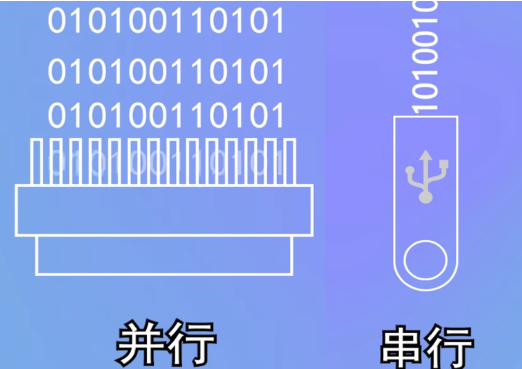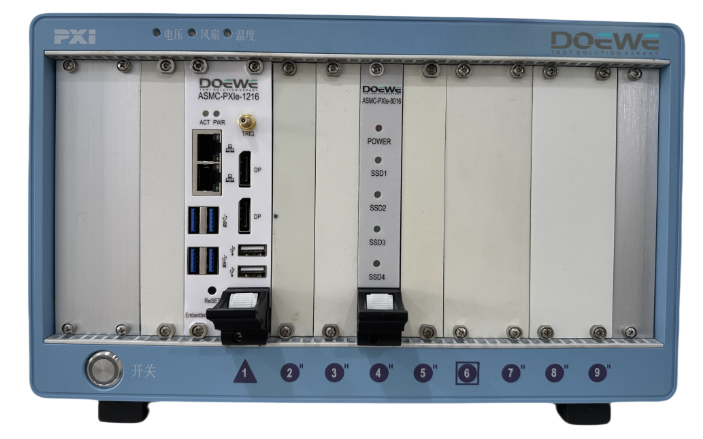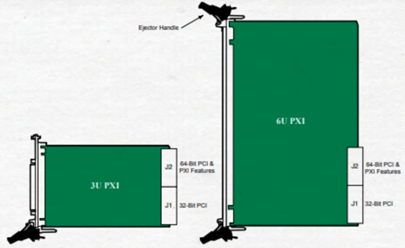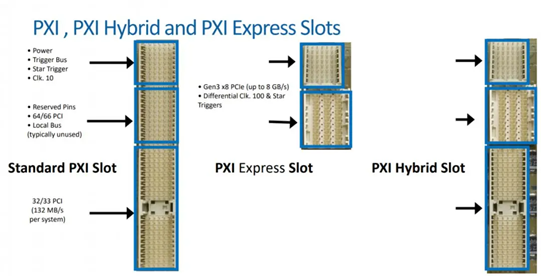Bus Fundamentals: Serial Bus vs. Parallel Bus
In computer systems, a bus is a common communication pathway that connects various functional components and transmits information between them. Buses are primarily categorized into parallel buses and serial buses based on the form of information transmission.
1.Parallel Bus: A parallel bus is a channel for transmitting data between parallel interfaces and computer devices. On a parallel bus, each data bit requires a separate transmission line, and all bits are transmitted simultaneously. This type of bus is analogous to a wide road allowing multiple cars to drive side-by-side. Consequently, it can transmit multiple bits of data simultaneously and is suitable for high-speed data transmission over short distances.
2.Serial Bus: A serial bus transmits data to or receives data from external cables via transceivers, reading data bit by bit sequentially. On a serial bus, data is time-division multiplexed onto one or a few lines, significantly reducing the number of required traces. A serial bus is like a narrow road permitting only one car to pass at a time, transmitting only one bit of data at any given moment. It is commonly used for long-distance communication or data transfer between low-speed devices.

The Relationship and Evolution of PCI, PCIe, and PXI
1. PCI (Peripheral Component Interconnect): PCI is a local bus standard introduced by Intel in 1991. It is a 32-bit parallel bus (expandable to 64 bits) with a bus frequency of 33MHz (can be increased to 66MHz), achieving a maximum transfer rate of 528MB/s. Its structure is simple, cost-effective, and easy to design. However, its bus bandwidth is limited, and sharing bandwidth among multiple devices can lead to performance degradation.
2. PCIe (PCI Express): PCIe is a high-speed serial bus introduced by PCI-SIG as the successor to PCI. Six generations have been developed and defined, commonly denoted by "Gen". The main advantages of PCIe are its high data transfer rate and dedicated bus bandwidth. Connections between PCIe devices with different numbers of channels are called Links. Each Link can consist of multiple Lanes, with common configurations being x1, x4, x8, and x16. Data transfer rates continuously increase with each generation; for example, PCIe 3.0 achieves a maximum transfer rate of approximately 1GB/s per lane direction (Gen3 x1 ~985 MB/s).
3. PXI (PCI eXtensions for Instrumentation): Proposed by National Instruments (NI) in 1997, PXI is a measurement and automation platform based on CompactPCI with the addition of trigger and clock signals. It combines the electrical bus characteristics of PCI with the ruggedness, modularity, and Eurocard mechanical packaging features of CompactPCI. It is suitable for testing, measurement, and data acquisition applications. PXI inherits PCI electrical signals, offering transfer performance ranging from 132MB/s to 528MB/s.
4. PXIe (PXI Express): In 2005, building upon CompactPCI Express and adding trigger and clock signals, the PXI Express standard was introduced. PXIe utilizes the PCI Express serial interface, providing significantly higher data transfer speeds and enhanced system expansion capabilities.
Definition of PXIe
PXIe (PCI Express Extensions for Instrumentation) is an open standard based on the PCI Express bus, primarily used in fields such as industrial automation and test & measurement. PXIe combines the high-speed data transfer capability of PCI Express with the ruggedness and modularity of the PXI platform, forming mechanical, electrical, and software specifications suitable for high-performance test and measurement applications.
Compared to traditional buses, PXIe offers significant advantages in data transfer rate, modular expansion capability, timing synchronization accuracy, and reliability. PXIe systems can achieve data transfer rates of several GB/s, far exceeding the performance of traditional buses. Simultaneously, they provide flexible modular expansion, enabling users to customize system configurations according to actual needs.
Composition of a PXIe System

A typical PXIe system consists of the following key components:
1. Chassis: Provides a rugged enclosure and backplane design for installing and protecting all peripheral modules. The chassis also supplies necessary power and cooling systems to ensure stable system operation.
2. Backplane: The backplane is one of the core components of a PXI system. It provides multiple PXI slots and communication buses (PCI bus) for connecting peripheral modules. The backplane is also responsible for data transfer and communication between modules.
3. Controller: The controller is the "brain" of the PXI system, responsible for system control and management. It is typically equipped with a high-performance multi-core processor and large-capacity storage devices to meet complex measurement requirements. The controller communicates with a computer via a PCI interface for data transfer and processing. (Note: While PXIe controllers often connect via PCIe internally within the chassis, external communication can use various interfaces like Ethernet, USB, or PCIe).
4. Peripheral Modules: Peripheral modules are the functional units of the PXI system, providing various test and measurement capabilities. These modules can be flexibly combined as needed to build a complete test system. Common peripheral modules include data acquisition cards, analog input/output cards, digital input/output cards, etc.

In a PXIe system, the backplane within the chassis provides the electrical connections between modules, ensuring high-speed and reliable data transmission. The system controller, acting as the core, runs test software, controls the operation of peripheral modules, and processes the acquired data.
PXIe Signals
Beyond inheriting the high-speed data transfer capability of PCI Express, PXIe defines additional signals relevant to testing, such as Power Management (Power), Trigger Bus, Star Trigger, and Clock signals (PXIe_Clk100). These signal lines facilitate synchronization and triggering among multiple instrument modules.

1. 100MHz Reference Clock: The PXIe specification defines a low-skew 100MHz reference clock located on the backplane and distributed to every peripheral slot, ensuring phase alignment of the clock signal received by each slot.
2. Local Bus: On each peripheral slot, PXIe defines a Local Bus connecting adjacent left and right peripheral slots, used for transmitting digital and analog signals.
3. Star Trigger: On specific peripheral slots (e.g., Slot 2), Star Trigger signal lines are defined, allowing trigger signals to be sent simultaneously to multiple instrument modules.
Furthermore, PXIe retains signals from the PXI platform, such as the 10MHz reference clock and local bus, to ensure compatibility with existing PXI systems.
Applications of PXIe
Leveraging its high performance, modularity, and flexibility, PXIe is widely used in numerous fields:
1. Industrial Automation: PXIe systems enable real-time monitoring and control of various equipment on production lines, improving production efficiency and product quality.
2. Test & Measurement: In semiconductor testing, military electronics testing, consumer electronics testing, and other domains, PXIe systems provide high-precision, high-speed data acquisition and analysis capabilities.
3. Hardware-in-the-Loop (HIL) Testing: In industries such as automotive electronics and aerospace, PXIe systems can simulate real-world operating environments for real-time testing and validation of control systems.
4. RF and Communications Testing: PXIe systems support high-speed data acquisition and real-time signal processing, making them suitable for test applications in wireless communications, radar, and related fields.
Conclusion
PXIe, as a high-performance, modular test and measurement platform, combines the high-speed data transfer capability of PCI Express with the ruggedness and modularity of the PXI platform. By understanding bus fundamentals, particularly the differences between serial and parallel buses, we gain a better comprehension of the composition, signals, and applications of PXIe systems. As technology continues to evolve, PXIe will play an increasingly important role in more fields, driving continuous advancements in industrial automation and test & measurement technologies.